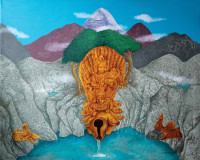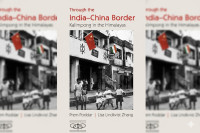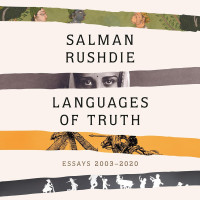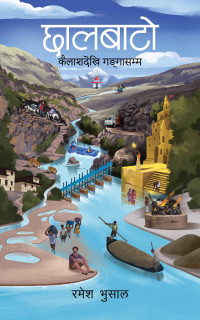Books
The pandemic and its woes
Keshab Thoker’s lens brings multiple aspects of the Covid pandemic together in a tight photobook.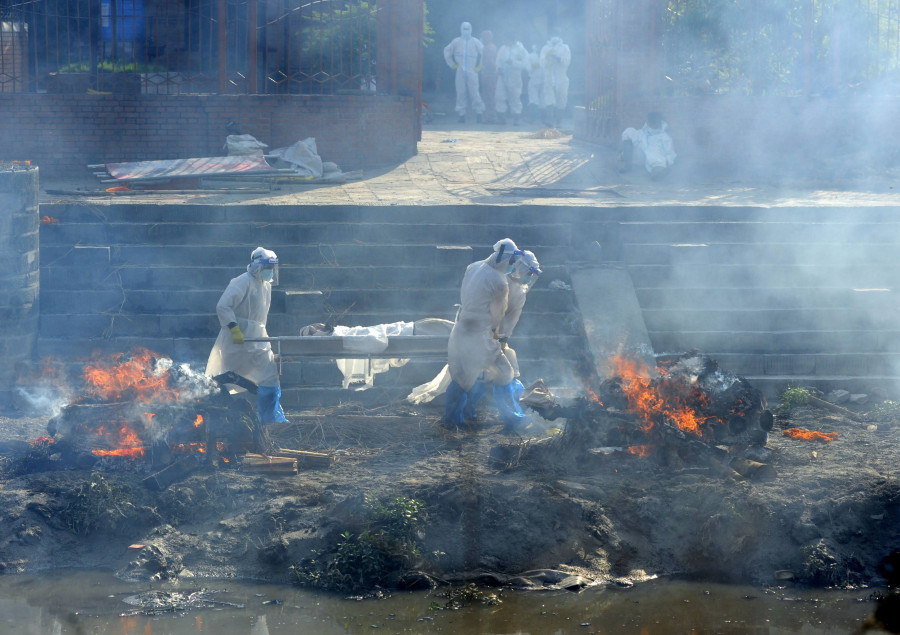
Manushree Mahat
The bustling streets of Kathmandu calmed during the pandemic. Air quality improved as emissions reduced. The entire city stayed indoors as the situation worsened.
But most importantly, and tragically, thousands of people lost their lives—specifically over 12,000 deaths have been recorded. Too many people lost their jobs. Frontline workers risked their lives to protect that of the infected. And this is the tragic reality Keshab Thoker lays bare in ‘Life in Pandemic’, a photo book that depicts the eruption of tragedies the pandemic dragged with it.
Behind the publication of the book, there’s a noble and personal understanding of the struggles that embodied the pandemic. “The pandemic was a life-changing event that disrupted our lives in a way we hadn’t experienced until it happened. When my son grows up and studies about COVID, I want him to see and understand the way our city grappled with it,” says Thoker.
Divided into seven segments, the photo book first captures how the pandemic rendered the streets of Kathmandu completely quiet. Titled ‘Silent City’, Thoker brings together all the photos that make Kathmandu ‘Kathmandu’—the concrete roads that otherwise would’ve been congested with the never-ending line of vehicles, the pilgrimage sites that months ago would have been overflowing with devotees, the skies that once carried vehicle smoke. But instead, everything is eerily quiet. ‘Silent City’ conveys the gravitas of the pandemic in shrouding the life of Kathmandu, as the melancholy of the pandemic permeates the life and livelihood of the people.
The second and third segments are particularly hard to look at. They contain pictures of the sick breathing through oxygen tanks and covered in blankets, and the burning woods of the funeral pyre cover the pages. ‘Critical Healthcare’, although short in length, shows the terrible conditions of our healthcare with patients lined up outside the hospital rooms with no space to accommodate them inside. In ‘Pathetic Cremation’, we witness some of the most difficult and vulnerable moments in people's lives as they stand at a distance from the burning bodies of their deceased loved ones. This distance is maintained because the military, dressed in full-white protective gear, took on the responsibility of performing the cremations. Smoke from the funeral pyres envelops the Pashupatinath area, while close-up images of grieving individuals vividly capture the loss of their loved ones.
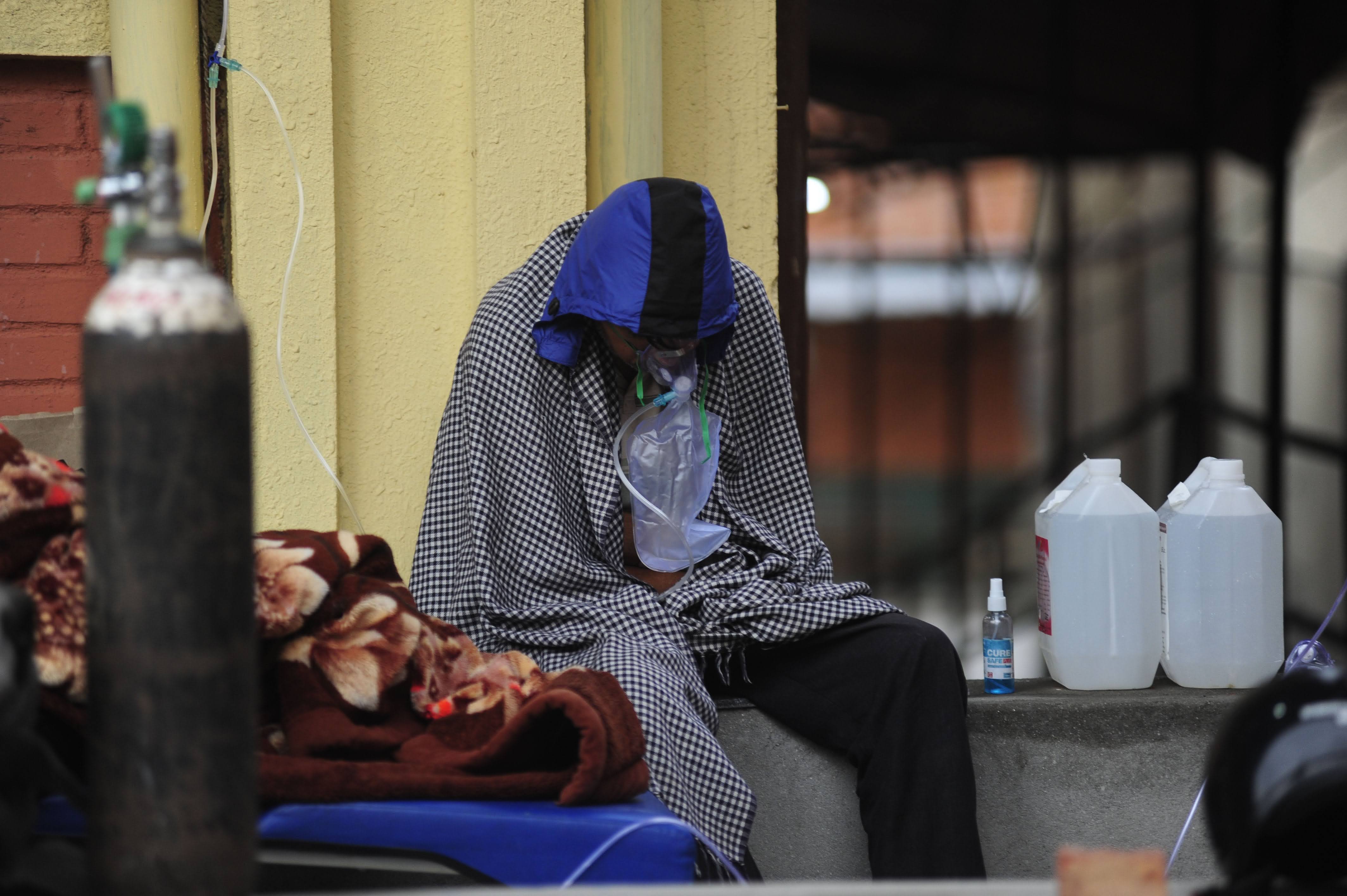
When you turn the pages of the book and find yourself in its fourth section titled, ‘Pregnancy in Isolation’, Thoker’s words truly hit their mark as you realise that Sangmo Yonjan Tamang, the editor of ‘Life in Pandemic’, and Thoker’s wife, was not only pregnant during the pandemic, she went into labour, and gave birth, while the world was still raging with rising death tolls of the pandemic. In Thoker’s photographies of his very pregnant wife, there is an intimacy; the dark silhouette that blankets most of the photos of Tamang, with the golden hues of the mornings and evenings, give these photographs a glow that puts Tamang at the centre of the lens.
Thoker’s photographs also take you to the protests that took place as people gathered to protest the government’s handling of the pandemic. The protestors with their masks, while maintaining the required distance, are seen holding boards that criticise the government for their inability to handle the required medical needs. Thoker even clicks a close-up of people, covered in splashes of yellows as they lie on their backs.
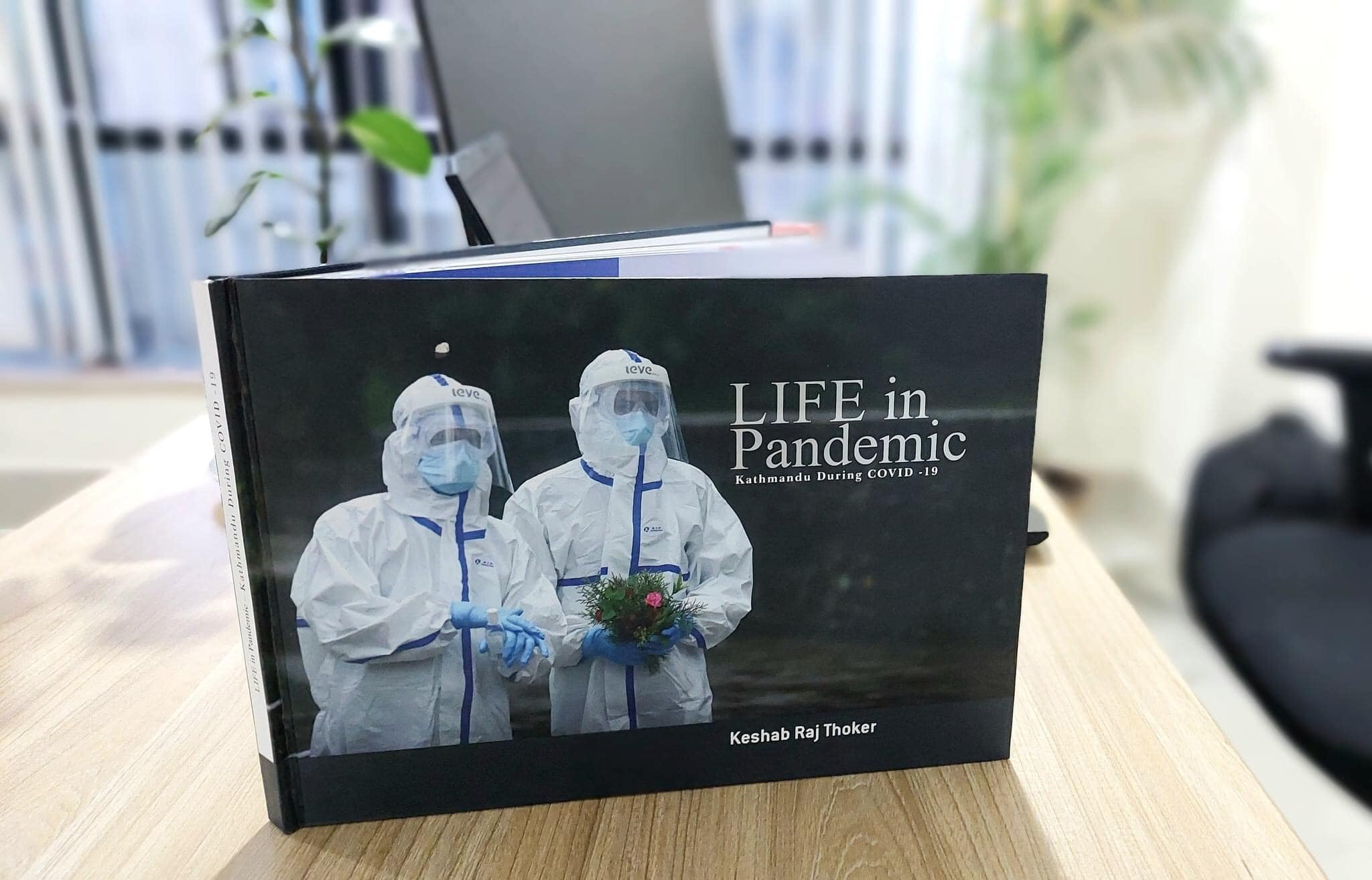
What Thoker truly shines in showing is the struggles of the frontline workers, and the economically downtrodden during the pandemic. He gives life to the people behind the protection and management of resources during the pandemic—the police officers, the doctors and nurses, the garbage cleaners, the vegetable and milk business owners, by telling their individual stories and accounts of their experience in the pandemic. Thoker doesn’t just click a shot of their lives—he retells their stories and perspectives as we read about them in the write-ups.
The write-ups on their part are fine; most of them detail the factual reality of the pandemic. Many write-ups just tell you what happened during the pandemic, although the later sections, like the ‘Frontline Workers’, were particularly memorable for the personal stories they depicted.
Many of the photographs in the final section, ‘Unprecedented Moments’, are both touching and saddening. While most people were too busy with their own lives coming to terms with being held up in their houses, some youths found the time to feed the street dogs. This is a kind moment that Thoker captures with his lens. Other photographs, like the one depicting a group of workers returning back home unemployed, show the economic crisis the pandemic wrought on the poor.
In Thoker’s photo book, intentionally or not, Thoker shows that economic divides had a big impact on how Covid affected people. As someone who remained tucked inside safely in my home, the exams as my only concern, that disparity in terms of both health hazards and economic struggles jumps out of the photographs. But what about the homeless people? What about the daily wage earners? What about the healthcare workers who put their own health on the line to save that of the others? These are the stories that Thoker lays bare in his photo book.
Life in Pandemic: Kathmandu during COVID-19
Author: Keshab Raj Thoker
Year: 2023
Publisher: Mhendo Trust




 20.12°C Kathmandu
20.12°C Kathmandu
